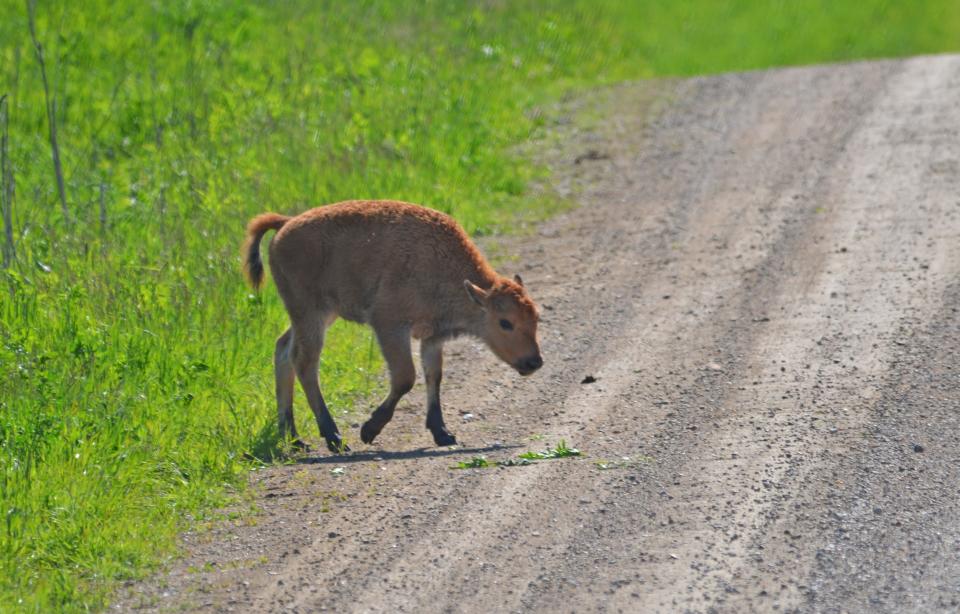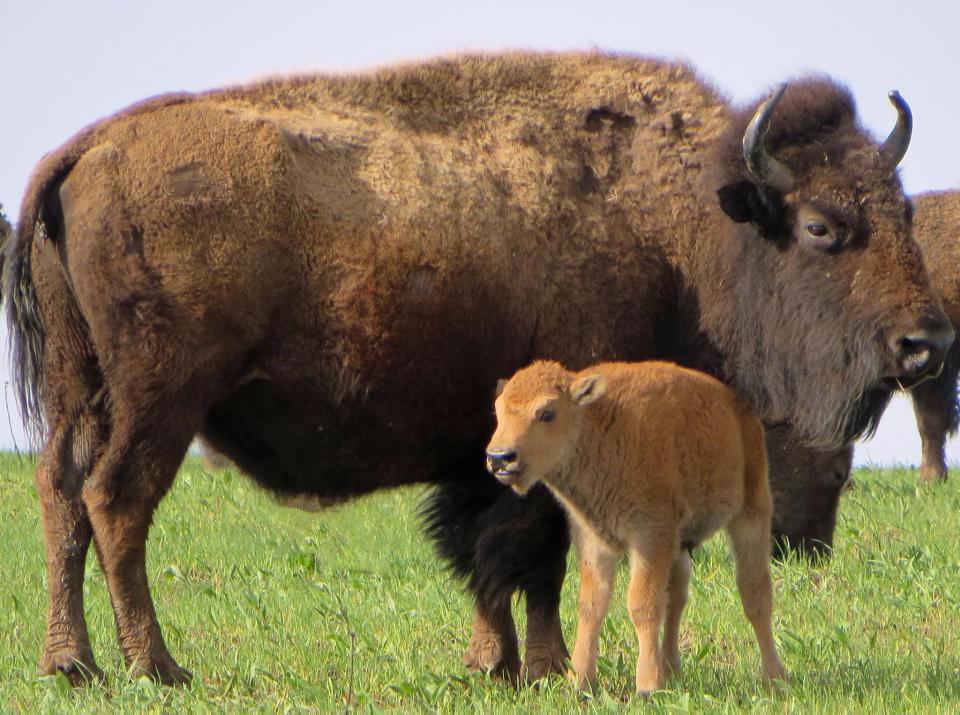Someone took home a baby bison that was abandoned from its herd at the Neal Smith refuge
A person took a bison calf that was separated from its herd at Neal Smith National Wildlife Refuge, kept it at home over the weekend and fed it, according to officials there.
Refuge manager Scott Gilje said that can be dangerous to wildlife, particularly at the refuge, whose mission is to restore Iowa's natural prairie lands, which includes a herd of bison that are free to roam the area.
Last week, Gilje said he received reports from drivers of a bison calf alone on the side of 96th Avenue, one of the roads that cuts through the park. Officials moved the calf back to the herd, but it was later seen alone again.
That's when someone allegedly took it home Friday before turning it back over to the refuge Monday. Gilje declined to identify the person.

Though Gilje said he understands why someone may want to care for a baby animal, human interaction can harm the rest of the herd.
"It's a baby calf — it pulls at your heartstrings," he said. But "when we start supplemental feeding, bottle feeding, taking care of the sick and wounded, then we're altering the future genetics of this herd, which is what we're trying to eliminate.
"We want these as natural as what would've been roaming the Plains in the 1500s."
The Neal Smith Wildlife Refuge takes a 'hands off' approach to keep bison herd natural
Established in 1990, the refuge works to actively protect, restore, reconstruct and manage Iowa's native ecosystem, according to the refuge's website. There are roughly 57 free-range bison in the approximately 800-acre enclosure located about 25 miles east of Des Moines.
More: Prairie restoration taking root in Iowa: Conservation groups eye new solutions
"Bison covered the landscape in the Midwest prior to European settlement. They were almost extinct from mass hunting," Gilje said. Per U.S. Department of the Interior regulations, "we want to manage the bison as natural as we can to bring the population back up to a sustainable level."
He said it's critical for these animals to live with little to no human interaction, as they would in the wild. Sometimes animals die of illness or from fights — it's just part of the life cycle.
"We are very hands off, so we don't do any supplemental feeding or disease control. These are managed as natural selection," Gilje said.
What happened to the baby bison?

According to Gilje, it's very rare for a mother to leave offspring behind, though it can happen if she senses the baby will not live. Officials do not know why this particular calf was not with its herd.
At least one woman, Lori DeBruin, has taken to Facebook to advocate for intervening to save the calf. She could not be reached for comment, but she in a post wrote the calf belongs to a blind mother.
Officials can't confirm that the blind bison was the mother, but said that she had another baby a few years ago that wasn't abandoned, making her lack of eyesight likely not the issue for leaving the baby behind.
More: Des Moines metro cities among 16 to get grants for urban water quality projects
DeBruin said in the post staff told her it's best to let the calf fend for itself.
"Coyotes will eat well," DeBruin said.
"This is so sad. They should have just destroyed it themselves rather than leave it to be tortured by predators," she said.
Why is human intervention bad for the bison?
Gilje said that human interaction with a bison can be potentially detrimental to a herd. Through bottle feeding or touching the animal, the human is changing the dynamics of genes for future offspring by eliminating their predator and prey instinct. In general, this can lead to animals being easier targets for hunters, like deer, or more susceptible to being hit by cars.
"Nobody wants to see a bison calf dying, me particularly," Gilje said. "But we have to manage these as part of the natural environment. We're not a petting zoo or a zoo or anything like that. These are managed to their benefit, not to our benefit."
The bison calf is back at the refuge, though DeBruin is still calling for action on social media for changes to be made regarding caring for the calf.
Noelle Alviz-Gransee is a breaking news reporter at the Des Moines Register. Follow her on Twitter @NoelleHannika or email her at NAlvizGransee@registermedia.com.
This article originally appeared on Des Moines Register: Baby bison taken from Neal Smith refuge

